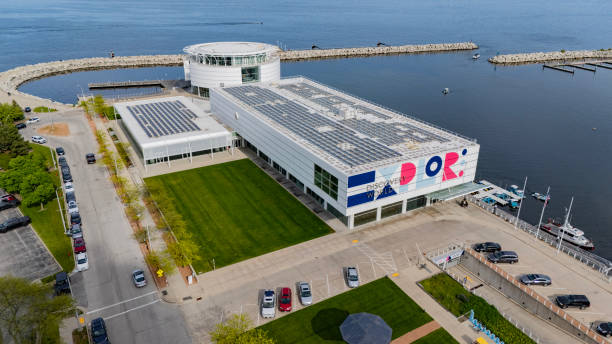The Evolution of Digital Marketing: From Traditional to Modern Strategies
Digital marketing has undergone significant transformations over the past few decades.ytrishi From its humble beginnings with traditional advertising methods to the sophisticated, data-driven strategies of today, digital marketing has revolutionized how businesses connect with their audiences. This article explores the journey of digital marketing, examining its evolution from traditional approaches to modern practices and looking at what the future might hold.
1. The Beginnings of Digital Marketing
1.1 Traditional Marketing Methods
Before the advent of digital technology, marketing strategies revolved around traditional media channels such as print, radio, and television. Companies relied heavily on these methods to reach broad audiences and promote their products or services. Advertising in newspapers, magazines, and on TV was the norm, and businesses had to depend on broad messaging to capture the interest of potential customers.
1.2 The Birth of the Internet
The early 1990s marked the beginning of the internet age, which paved the way for digital marketing. The launch of the first web browsers and the World Wide Web enabled businesses to create websites and reach customers online. The ability to set up a digital presence was revolutionary, but digital marketing was still in its infancy.
2. The Rise of Digital Marketing
2.1 Search Engine Optimization (SEO)
As the internet grew, so did the need for effective ways to ensure that websites were visible to potential customers. This led to the development of Search Engine Optimization (SEO). SEO involves optimizing website content and structure to improve its ranking on search engine results pages (SERPs). In the early 2000s, SEO became a crucial component of digital marketing strategies, helping businesses increase their online visibility.
2.2 Pay-Per-Click (PPC) Advertising
Alongside SEO, Pay-Per-Click (PPC) advertising emerged as a key digital marketing tool. PPC allows businesses to place ads on search engines and other platforms, paying only when a user clicks on the ad. This model provided a more measurable way to gauge the effectiveness of online advertising campaigns and offered businesses a way to target specific audiences with precision.
3. The Advent of Social Media Marketing
3.1 The Emergence of Social Networks
The mid-2000s saw the rise of social media platforms like Facebook, Twitter, and LinkedIn. These platforms created new opportunities for businesses to engage with their audiences on a more personal level. Social media marketing quickly became an essential component of digital marketing strategies, allowing brands to build relationships with customers and create a community around their products.
3.2 Influencer Marketing
With the growth of social media, influencer marketing emerged as a powerful strategy. Influencers—individuals with large and engaged followings—could promote products and services to their audiences, often with higher engagement rates than traditional advertising methods. This approach leveraged the trust and authenticity that influencers had built with their followers.
4. The Age of Data-Driven Marketing
4.1 Big Data and Analytics
As digital marketing evolved, so did the tools and technologies used to analyze and leverage data.ytrishi Big data analytics allowed businesses to gather and interpret vast amounts of information about consumer behavior, preferences, and trends. This data-driven approach enabled marketers to create more targeted and personalized campaigns, leading to higher conversion rates and more efficient use of marketing budgets.
4.2 Marketing Automation
Marketing automation tools became increasingly popular in the 2010s, allowing businesses to automate repetitive tasks such as email campaigns, social media posts, and lead nurturing. Automation not only streamlined marketing processes but also enabled businesses to deliver personalized content at scale, improving customer engagement and satisfaction.
5. The Present and Future of Digital Marketing

5.1 Artificial Intelligence and Machine Learning
Today, artificial intelligence (AI) and machine learning are shaping the future of digital marketing. AI-powered tools are being used to analyze customer data, predict trends, and create highly personalized marketing experiences. Chatbots, for example, use AI to interact with customers in real-time, providing support and information around the clock.
5.2 Privacy and Data Protection
As digital marketing becomes more sophisticated, concerns about privacy and data protection have also grown. Regulations such as the General Data Protection Regulation (GDPR) and the California Consumer Privacy Act (CCPA) have introduced new standards for how businesses handle customer data. Marketers must navigate these regulations carefully to ensure compliance while still delivering effective and personalized marketing experiences.
5.3 The Rise of New Technologies
Emerging technologies like augmented reality (AR) and virtual reality (VR) are beginning to make their mark on digital marketing. AR and VR offer immersive experiences that can enhance brand engagement and provide customers with new ways to interact with products and services. As these technologies continue to evolve, they are likely to become integral parts of digital marketing strategies.
6. Conclusion
The evolution of digital marketing has been marked by rapid advancements and significant changes. From the early days of the internet to the sophisticated, data-driven strategies of today, digital marketing has transformed the way businesses connect with their audiences. As technology continues to advance, digital marketing will undoubtedly continue to evolve, presenting new opportunities and challenges for businesses. Staying informed and adaptable will be key for marketers looking to thrive in this ever-changing landscape.
I hope this example aligns with your needs. If you have a specific topic or additional requirements, feel free to let me know.




